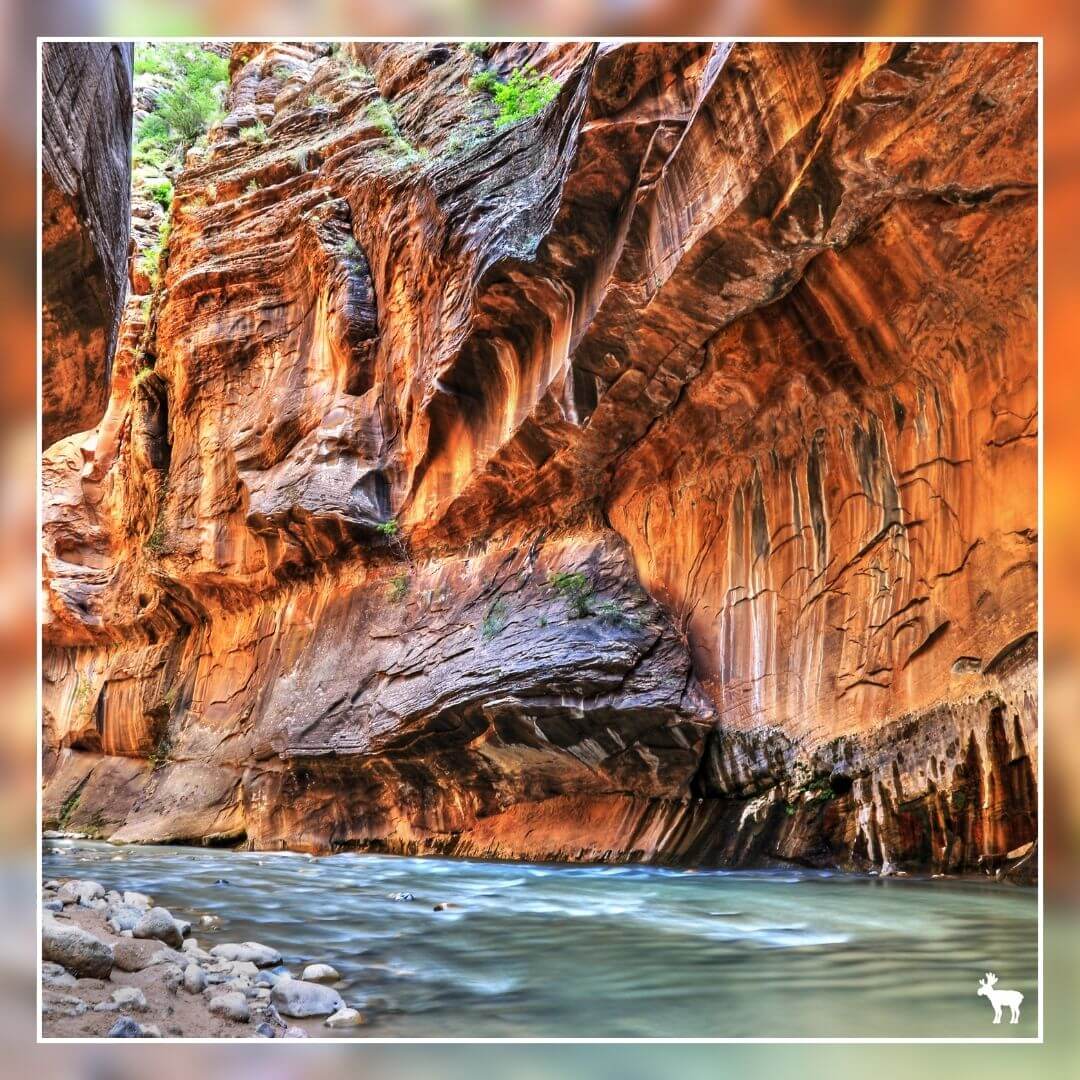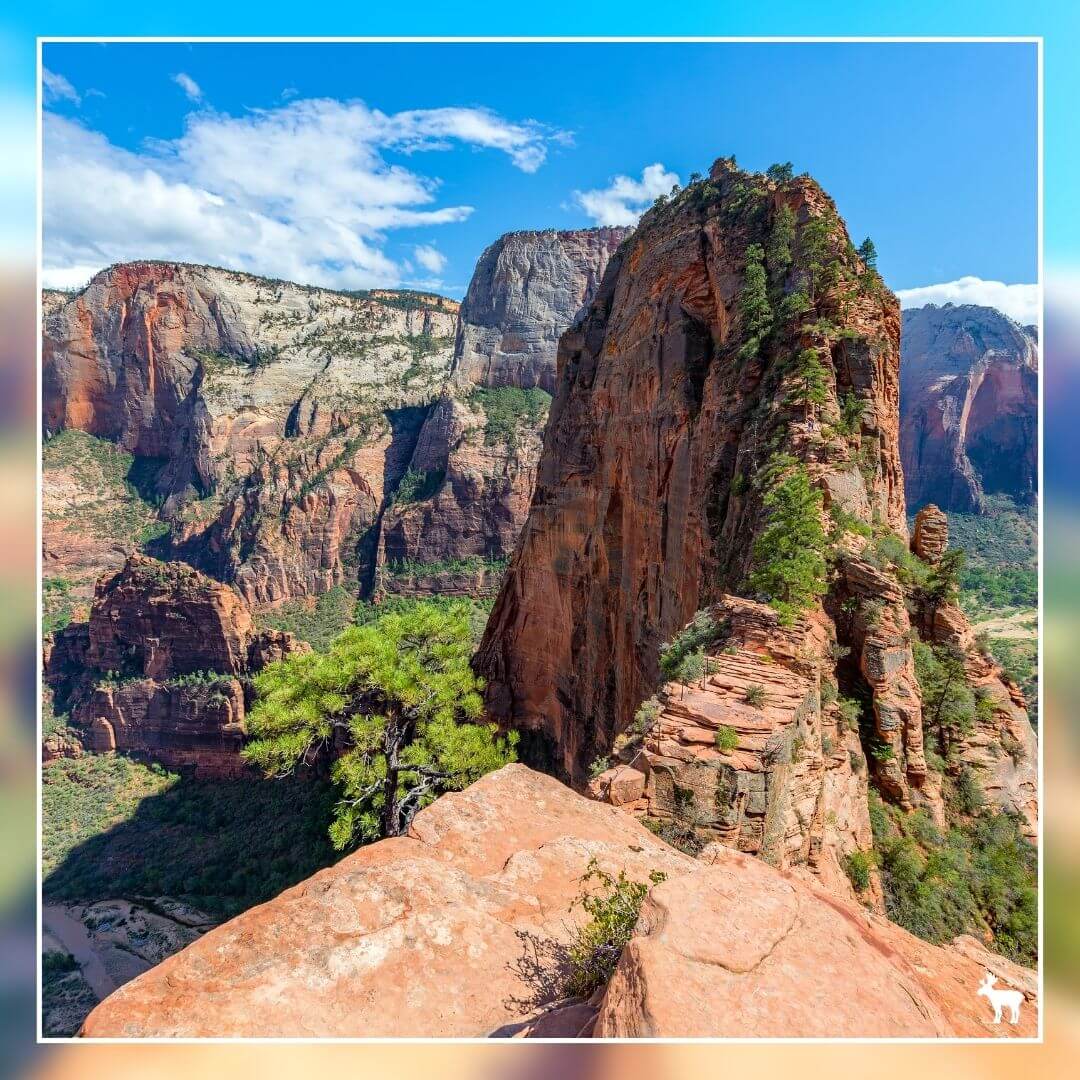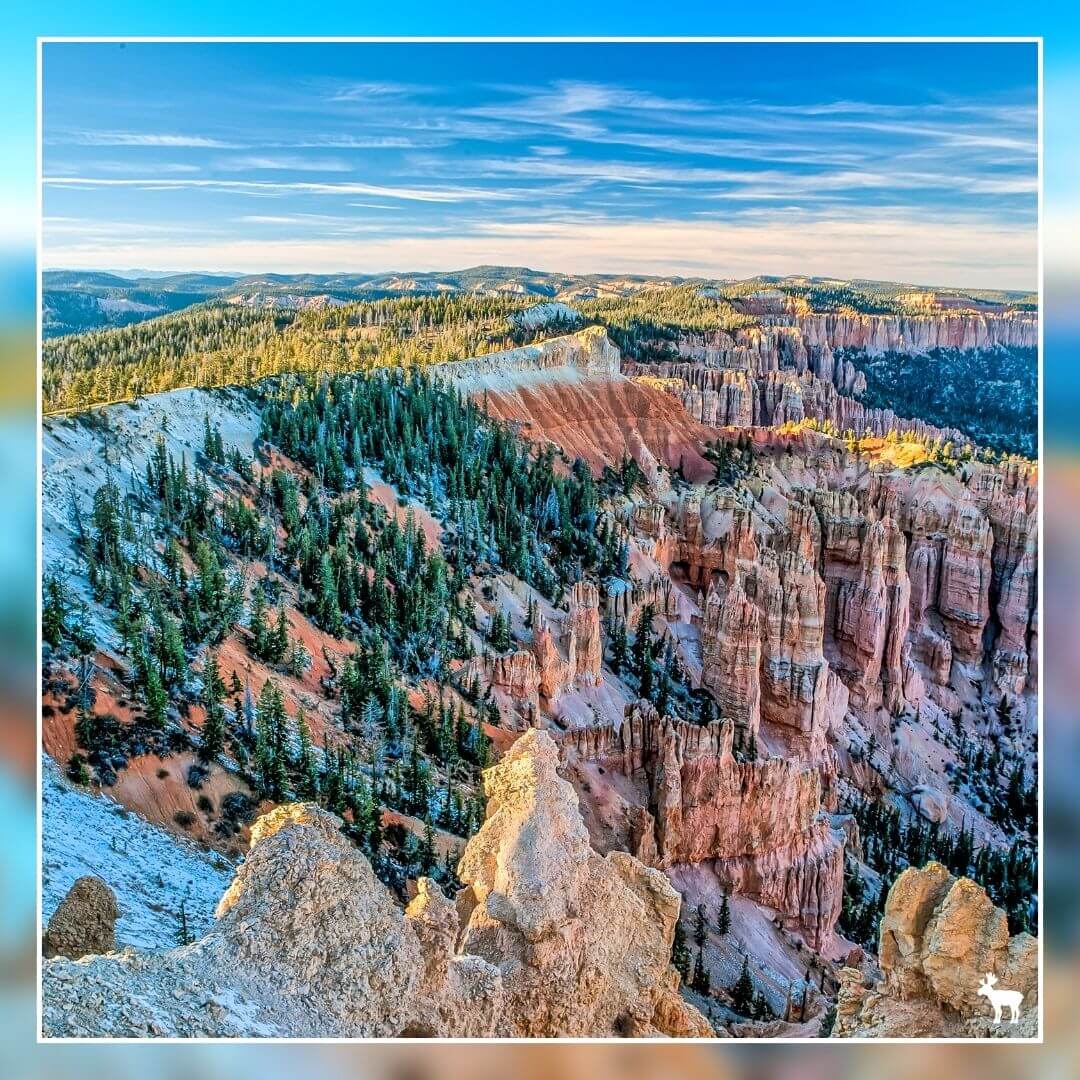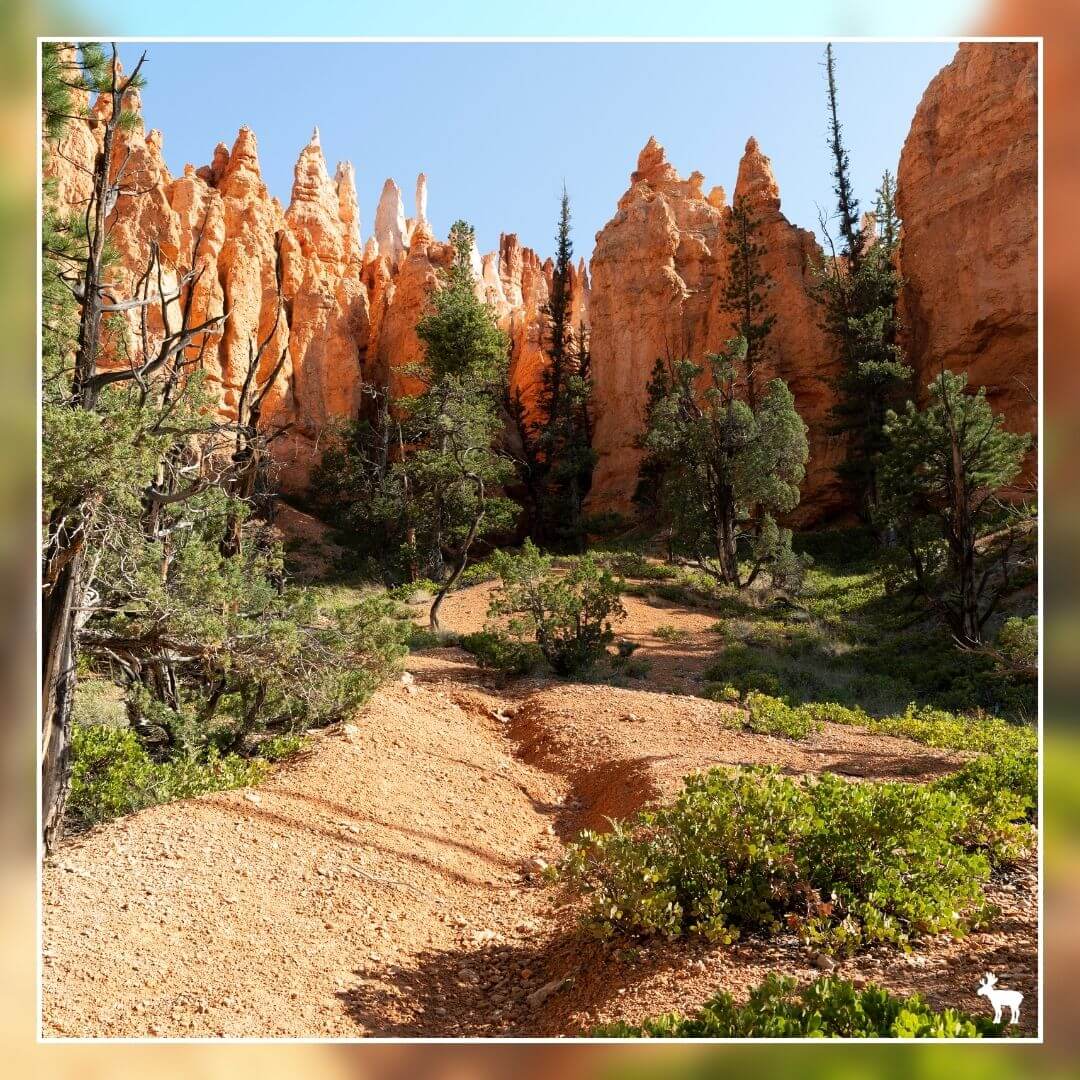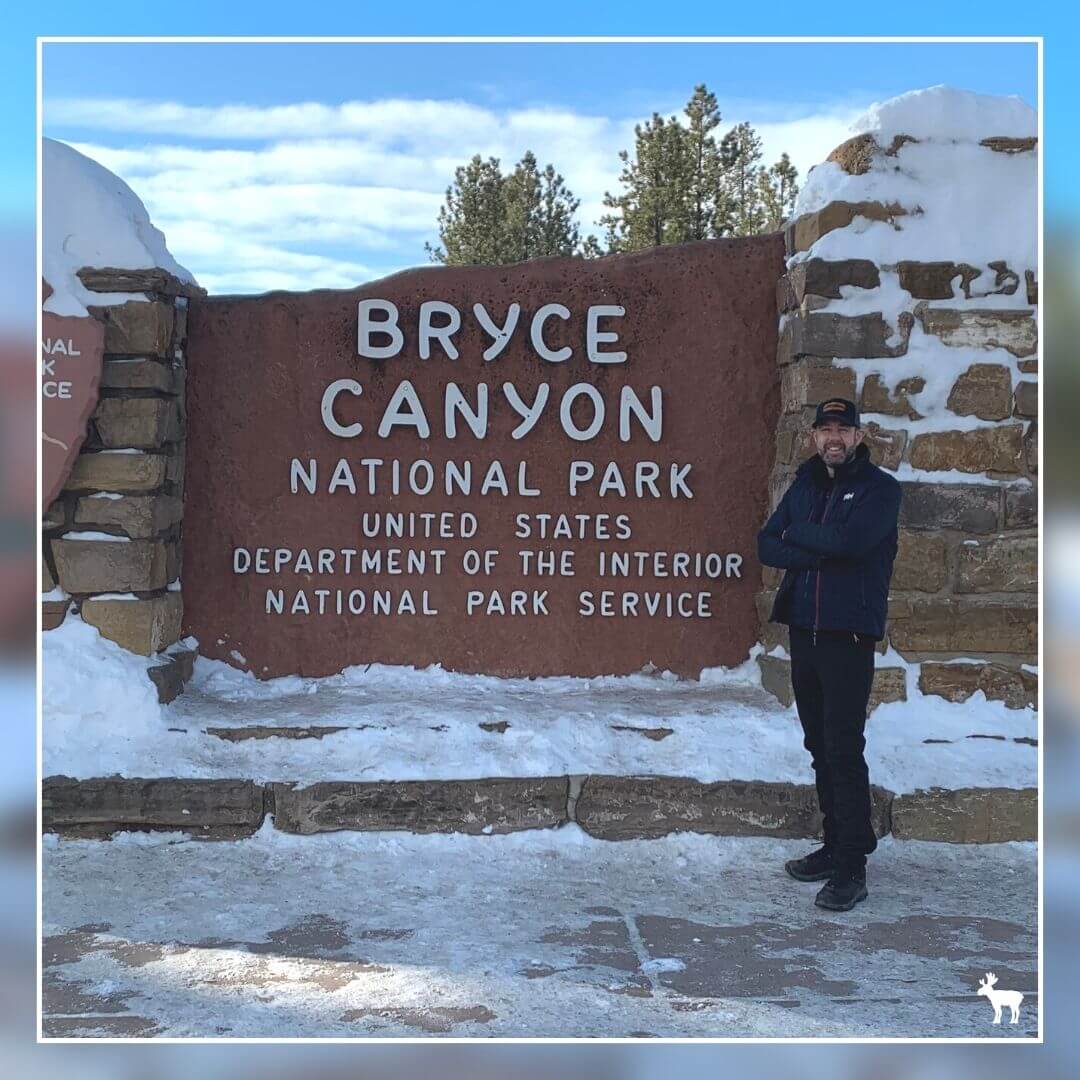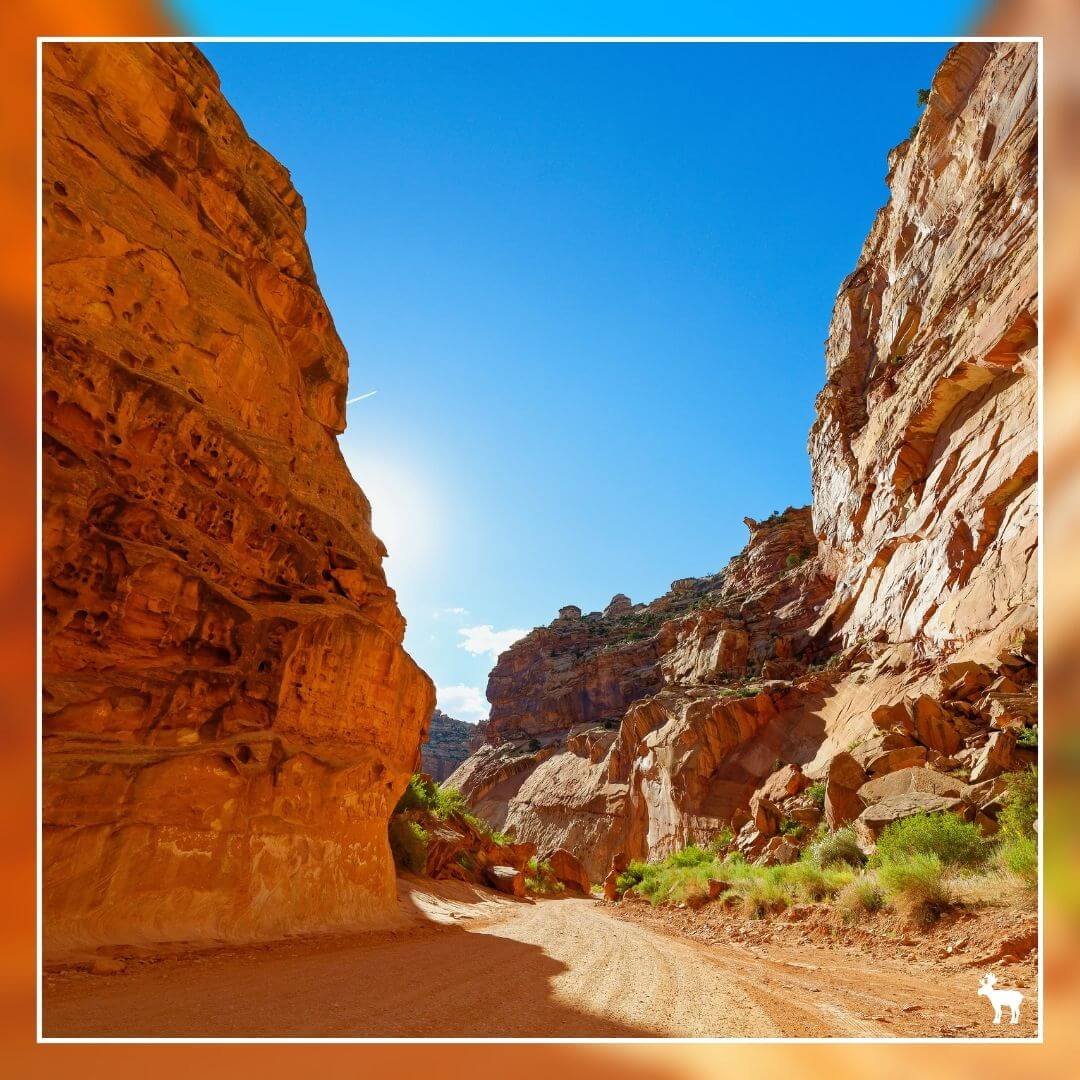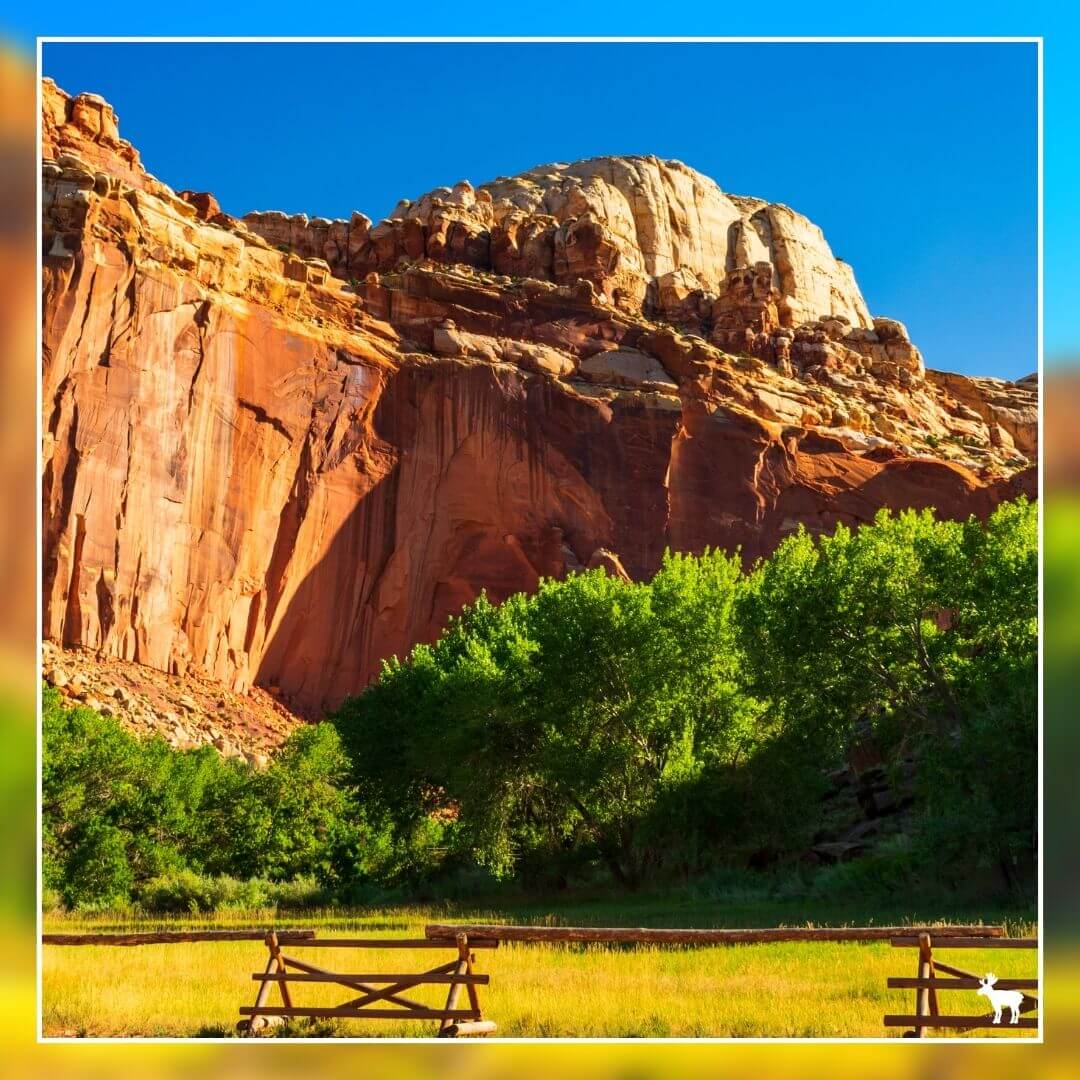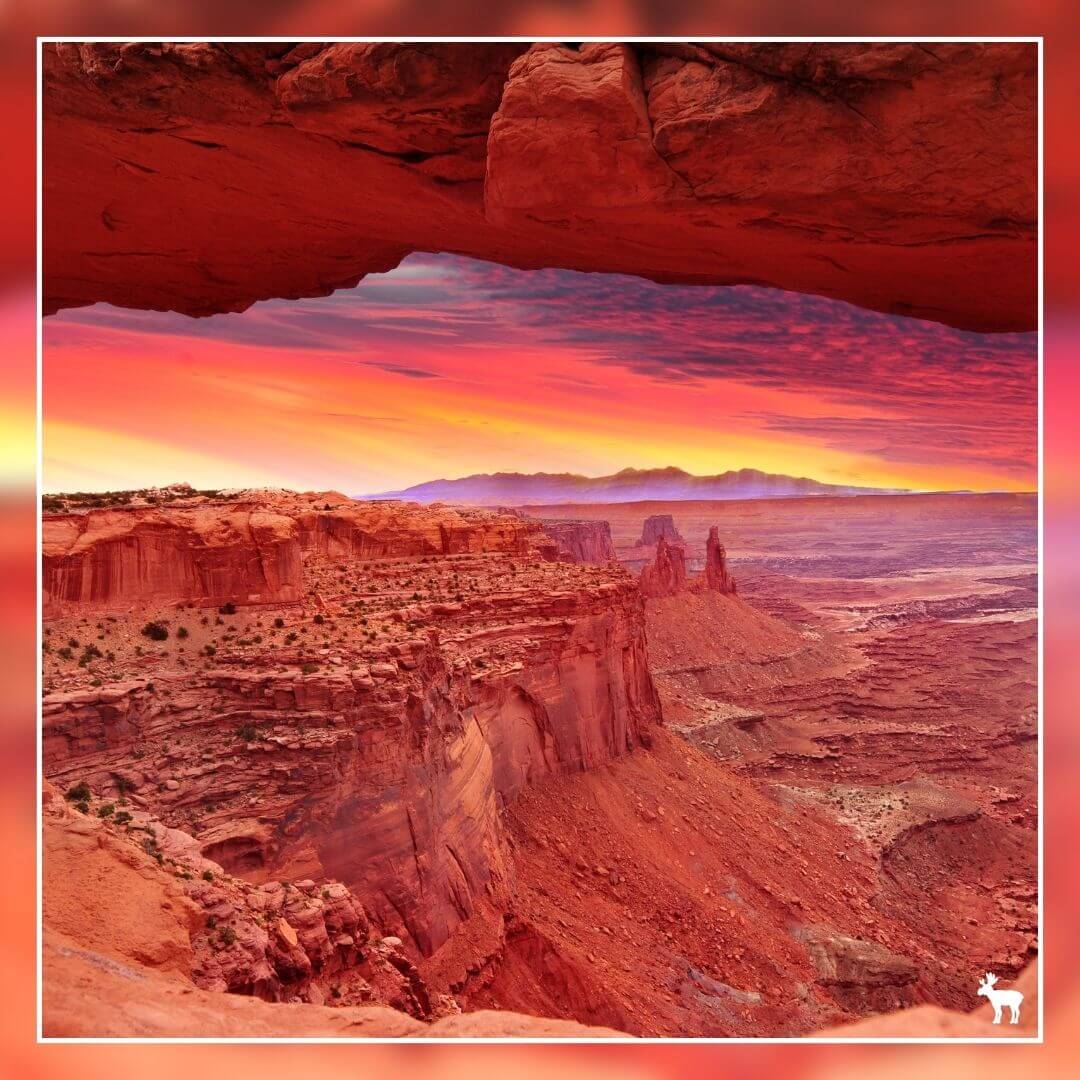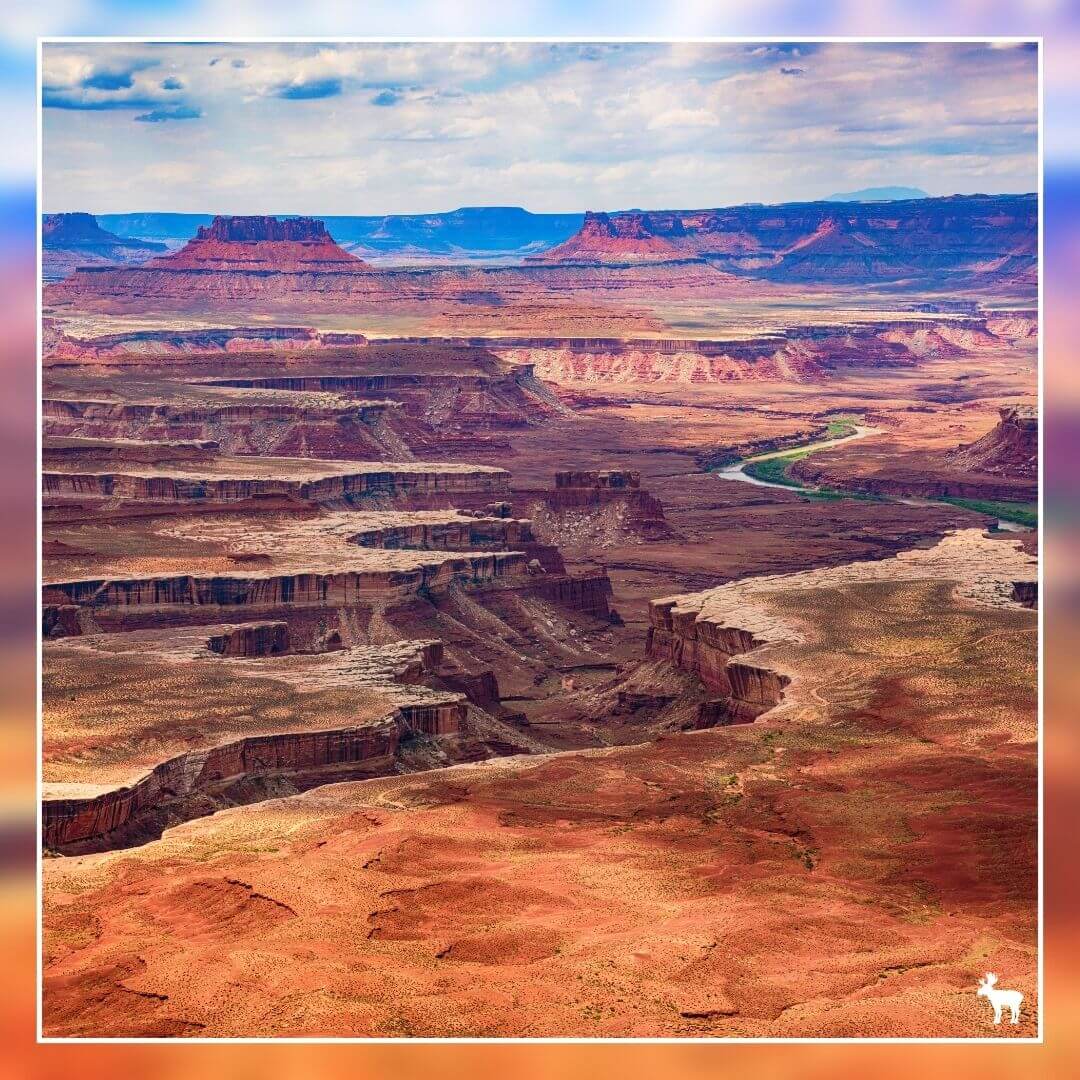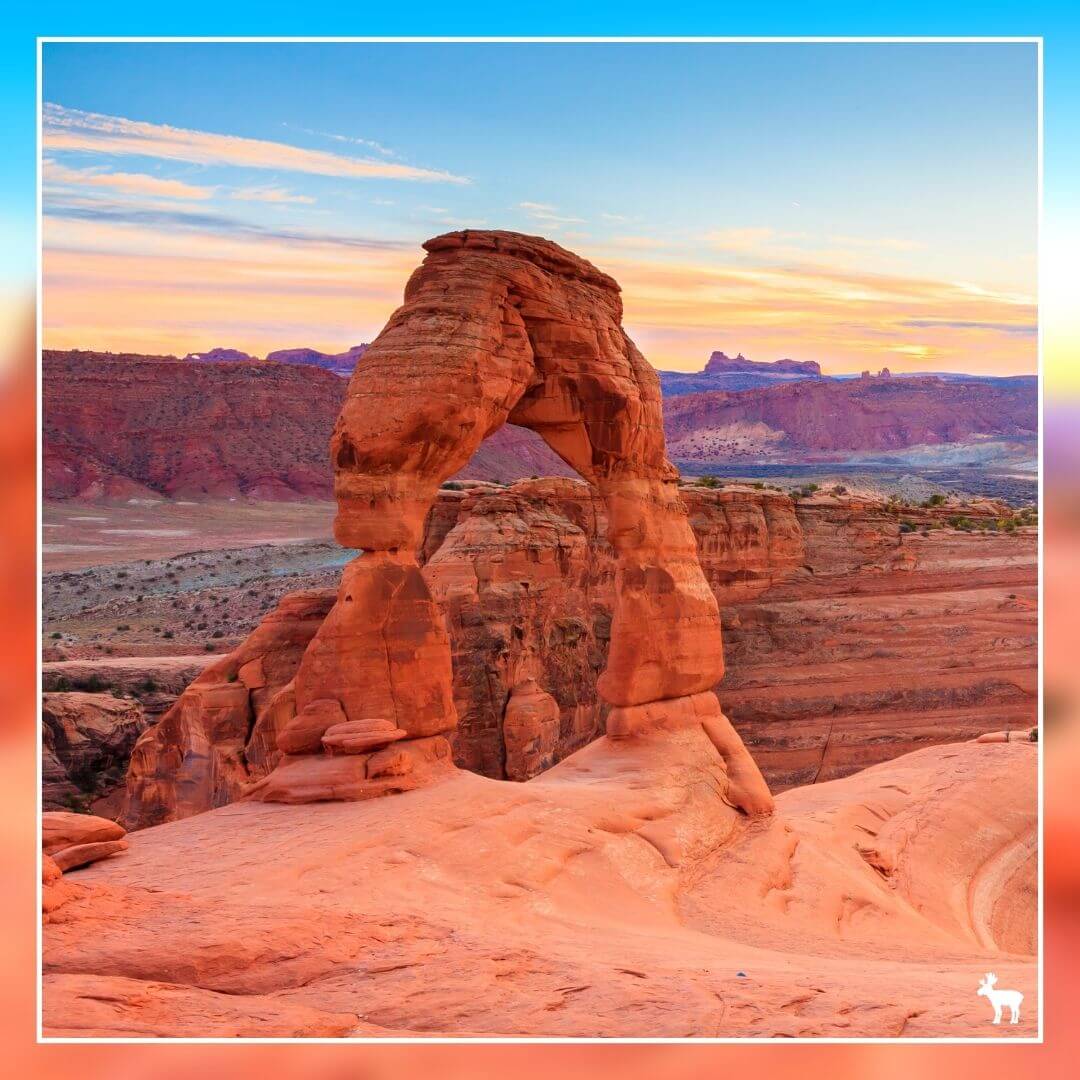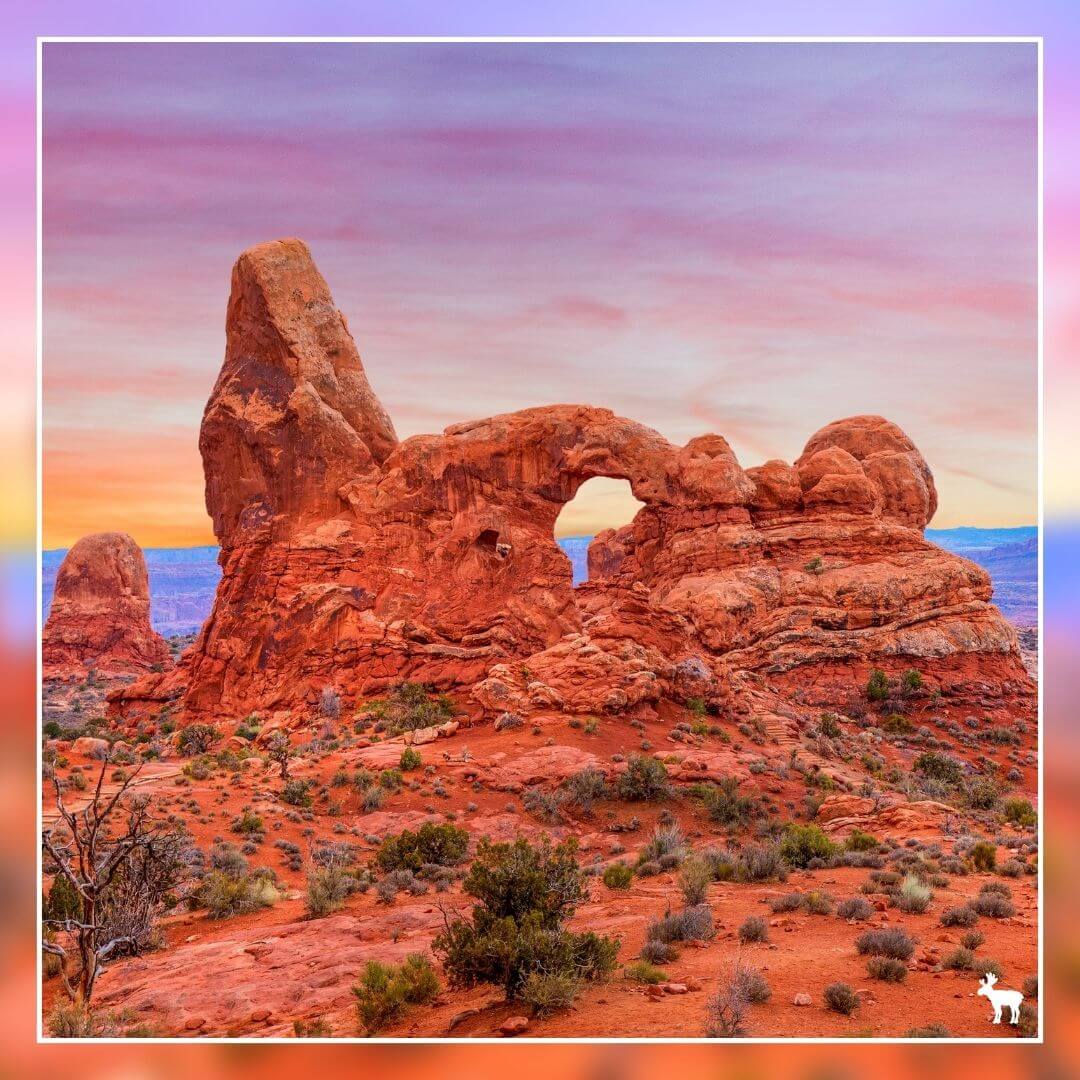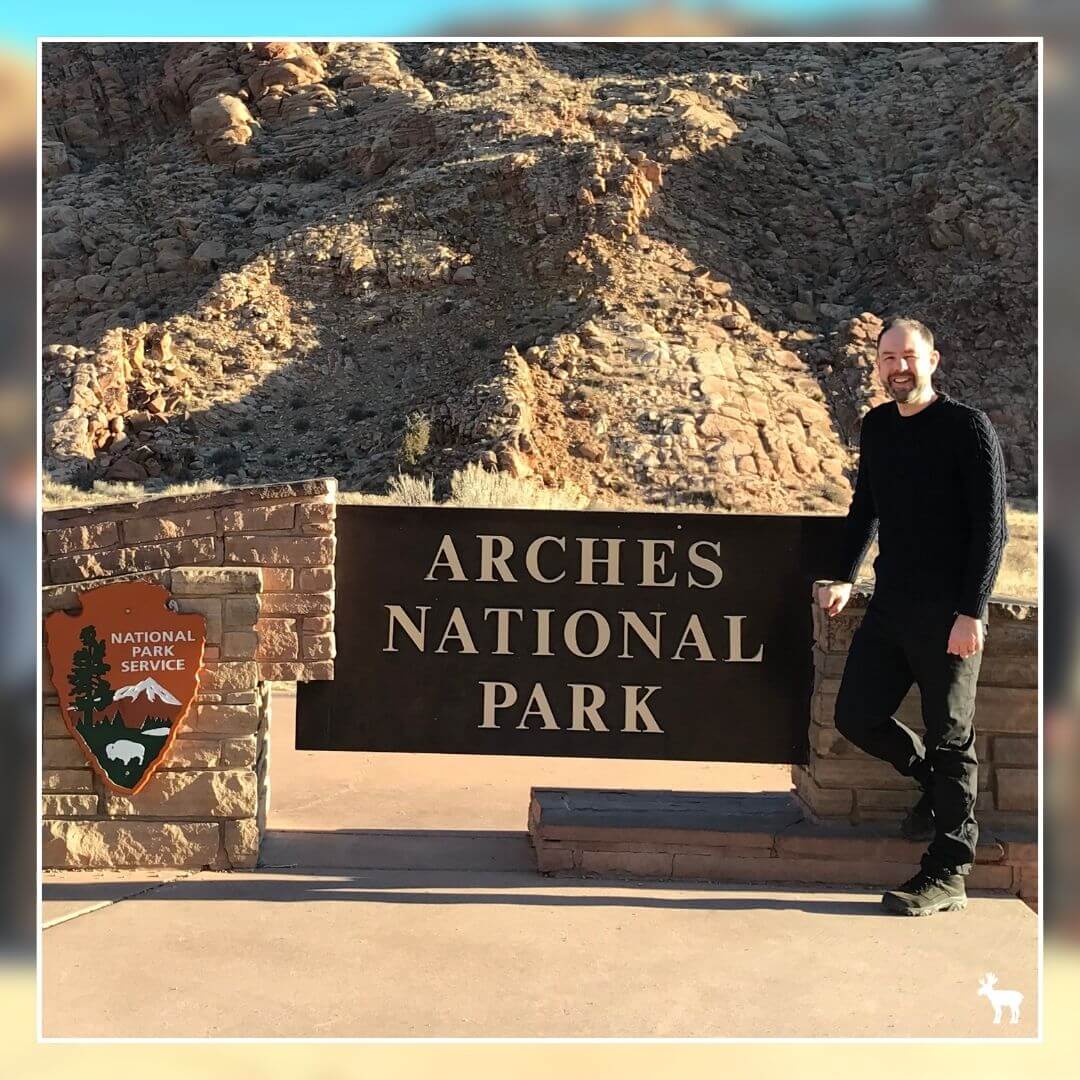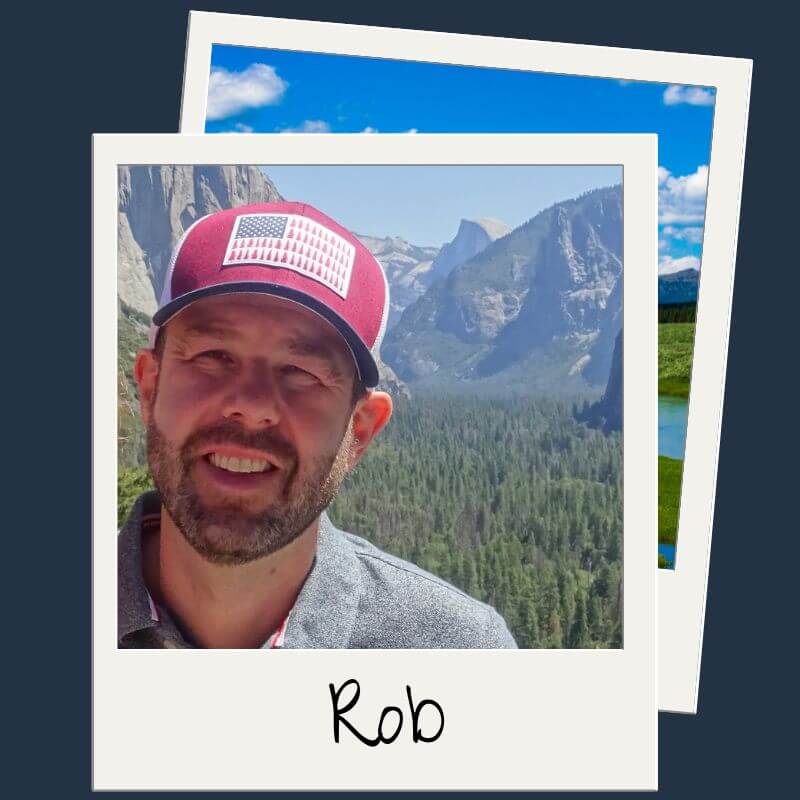Embark on an unforgettable 5-day journey from Las Vegas to explore the breathtaking landscapes and unique wonders of Utah's National Parks.
Utah National Parks 5 Day Itinerary from Las Vegas At a Glance
Day 1: Zion National Park
On your first day in Zion National Park, visit the Temple of Sinawava and take the Riverside Walk to Zion Canyon Narrows. For more adventure, hike The Narrows along the Virgin River or tackle the Angels Landing Trail for breathtaking views. Also, explore the Emerald Pools Trail, which leads to picturesque pools and waterfalls.
Day 2: Bryce Canyon National Park
During your Bryce Canyon National Park visit, take the 18-mile Bryce Canyon Scenic Drive to see various viewpoints of the colorful hoodoos. Walk along the Rim Trail for more views and visit key spots like Inspiration Point for panoramic views, and Rainbow and Yovimpa Points for different perspectives of the canyon and beyond.
Day 3: Capitol Reef National Park
Drive the scenic route, visit the Gifford Homestead, walk through historical orchards, and hike the Hickman Bridge Trail. Explore the Grand Wash and Capitol Gorge roads, and if you're adventurous, consider a guided canyoneering tour through the park's rugged terrain.
Day 4: Canyonlands National Park
Focus on the Island in the Sky district, the most accessible and popular area. A day is enough to see the overlooks and shorter trails here. Island in the Sky sits on a high mesa with dramatic drop-offs, offering the best views view of the landscape below.
The key highlight is Grand View Point, providing spectacular views of canyons carved by the Colorado and Green Rivers. Take a short walk to the Grand View Point Overlook for more stunning panoramic views.
The key highlight is Grand View Point, providing spectacular views of canyons carved by the Colorado and Green Rivers. Take a short walk to the Grand View Point Overlook for more stunning panoramic views.
Day 5: Arches National Park
Enjoy a scenic drive showcasing famous natural arches and rock formations. Key attractions include the iconic Delicate Arch, viewed easily from two different spots, and Balanced Rock, with a short trail around its base. For a more in-depth experience, explore the Park Avenue trail or the Devils Garden Loop, which includes the Landscape Arch and other unique formations. Most of the best hikes in the park are short and suitable for a day trip.
How many days do you need to see Utah national parks?
The time needed to visit Utah's national parks, often referred to as the "Mighty 5," can vary depending on your interests and pace. However, a general guideline is as follows:
How many days do you need in Zion National Park?
To fully enjoy Zion National Park, allocating two to three days is ideal. This timeframe lets you tackle longer hikes such as Angels Landing or the Narrows, while also visiting the main scenic spots.
If your schedule only permits a one-day visit, you can still experience several significant attractions along Zion Canyon. This includes doing shorter hikes like the Lower Emerald Pools and the Riverside Walk.
If your schedule only permits a one-day visit, you can still experience several significant attractions along Zion Canyon. This includes doing shorter hikes like the Lower Emerald Pools and the Riverside Walk.
How many days do you need in Bryce Canyon National Park?
Bryce Canyon National Park is known for being one of the more compact national parks, making it possible to see a lot in just one day or even half a day.
How many days do you need in Arches National Park?
Arches National Park is quite accessible and can be substantially explored in just a day, if that's your only option. The park's scenic drive provides numerous opportunities to see its famous natural arches and unique rock formations, with most trails being short and manageable, allowing for a couple of hikes in a short time.
However, an extra day in Arches is perfect for a more comprehensive experience. This would allow you to join the ranger-led hike through the Fiery Furnace and tackle some of the park's longer hiking trails.
However, an extra day in Arches is perfect for a more comprehensive experience. This would allow you to join the ranger-led hike through the Fiery Furnace and tackle some of the park's longer hiking trails.
How many days do you need in Canyonlands National Park?
For a visit focused on the Island in the Sky district in Canyonlands National Park, a single day is sufficient if you plan to stick to the main overlooks and shorter trails.
However, if you're interested in tackling the longer hiking trails or venturing on the off-road trails beneath the rim, planning for at least two days is advisable.
However, if you're interested in tackling the longer hiking trails or venturing on the off-road trails beneath the rim, planning for at least two days is advisable.
How many days do you need in Capitol Reef National Park?
Capitol Reef National Park's Fruita area is relatively small, allowing visitors to cover a lot of ground quickly. If your visit is limited to a single day, you can take a drive along the park's scenic route and explore the Grand Wash and Capitol Gorge spur roads. Within this timeframe, you'll also be able to visit the Gifford Homestead, stroll through the orchards, and enjoy a brief hike to Hickman Bridge.
In total, a trip covering all five parks would ideally be around 7-12 days. This allows for not just visiting the parks but also for travel time between them, as they are spread out across the state of Utah. If your schedule is tight, you could see the highlights of each park in just 5 days.
This Utah road trip itinerary does not include Monument Valley, Horseshoe Bend, Antelope Canyon, Lake Powell, or Grand Canyon National Park, but these destinations could be incorporated into a longer itinerary.
Additionally, Utah boasts some excellent state parks, such as Goblin Valley State Park and Dead Horse Point State Park, which are well worth visiting if you have more time in your itinerary.
In total, a trip covering all five parks would ideally be around 7-12 days. This allows for not just visiting the parks but also for travel time between them, as they are spread out across the state of Utah. If your schedule is tight, you could see the highlights of each park in just 5 days.
This Utah road trip itinerary does not include Monument Valley, Horseshoe Bend, Antelope Canyon, Lake Powell, or Grand Canyon National Park, but these destinations could be incorporated into a longer itinerary.
Additionally, Utah boasts some excellent state parks, such as Goblin Valley State Park and Dead Horse Point State Park, which are well worth visiting if you have more time in your itinerary.
Adventure Without the Effort
Embark on a Group Guided Tour with Everything Included
If you prefer not to plan your own trip, consider joining an organized group tour, where expert guides lead you on excursions, and all accommodations are included for a hassle-free experience.
How far apart are the 5 national parks in Utah?
The five national parks in Utah, known as the "Mighty 5," are spread out across the southern and eastern parts of the state. The distances between them vary, but here's a rough guide:
Zion to Bryce Canyon: About 72 miles (116 km), approximately a 1.5-hour drive.
Bryce Canyon to Capitol Reef: Roughly 120 miles (193 km), around a 2 to 2.5-hour drive.
Capitol Reef to Arches: Approximately 135 miles (217 km), which is about a 2 to 2.5-hour drive.
Arches to Canyonlands (Island in the Sky district): Only about 30 miles (48 km), around a 40-minute drive. It's important to note that Canyonlands has multiple districts, and the Island in the Sky district is the closest to Arches.
These distances make it feasible to drive between each park within a few hours, although the actual travel time can vary depending on road conditions, traffic, and stops along the way.
Zion to Bryce Canyon: About 72 miles (116 km), approximately a 1.5-hour drive.
Bryce Canyon to Capitol Reef: Roughly 120 miles (193 km), around a 2 to 2.5-hour drive.
Capitol Reef to Arches: Approximately 135 miles (217 km), which is about a 2 to 2.5-hour drive.
Arches to Canyonlands (Island in the Sky district): Only about 30 miles (48 km), around a 40-minute drive. It's important to note that Canyonlands has multiple districts, and the Island in the Sky district is the closest to Arches.
These distances make it feasible to drive between each park within a few hours, although the actual travel time can vary depending on road conditions, traffic, and stops along the way.
How to see all 5 Utah National Parks in 5 days
If you're renting a car for a trip to Utah's national parks and starting from Las Vegas, it's a good idea to pick-up your rental car the evening before. This way, you can start your first full day early and head to Zion National Park right away. Better still, get a head start and stay overnight in Springdale, Utah, which is the gateway town to Zion National Park.
If you're staying in Las Vegas the night before your road trip to the Utah Mighty Five, there are plenty of hotel options. A personal recommendation is The LINQ Hotel, which I've found to be an affordable and conveniently located choice, especially for family travelers.
When it comes to picking up your rental car, many hotels in Las Vegas offer this service. However, you'll find a larger selection at the Las Vegas Airport. Remember, the airport has a separate Rental Car Center away from the main terminal. So, if you're getting a ride share or taxi from your hotel, be sure to specify that you're going to the Rental Car Center, not just the airport terminal.
If you're staying in Las Vegas the night before your road trip to the Utah Mighty Five, there are plenty of hotel options. A personal recommendation is The LINQ Hotel, which I've found to be an affordable and conveniently located choice, especially for family travelers.
When it comes to picking up your rental car, many hotels in Las Vegas offer this service. However, you'll find a larger selection at the Las Vegas Airport. Remember, the airport has a separate Rental Car Center away from the main terminal. So, if you're getting a ride share or taxi from your hotel, be sure to specify that you're going to the Rental Car Center, not just the airport terminal.
Day 1 Zion National Park
The driving time from Las Vegas Airport (McCarran International Airport) to Springdale, typically takes around 2.5 to 3 hours. This estimate can vary depending on traffic, road conditions, and the specific route taken.
Due to the relatively short drive time between Las Vegas and Springdale, it's beneficial to consider making this journey the night before you begin your Mighty 5 road trip. This approach allows you to maximize your time in Zion National Park, as you can start exploring the park the next morning without the need for additional travel on your first day.
Due to the relatively short drive time between Las Vegas and Springdale, it's beneficial to consider making this journey the night before you begin your Mighty 5 road trip. This approach allows you to maximize your time in Zion National Park, as you can start exploring the park the next morning without the need for additional travel on your first day.
It's important to remember that the park's parking lots tend to fill up quickly during the day. Alternatively, visitors can park in Springdale and use the free Springdale Line shuttle to the park entrance.
The Zion Canyon Shuttle is the best way to explore the park, connecting the Zion Canyon Visitor Center with various stops along the Zion Canyon Scenic Drive. You can hop off at any open stop to explore. Stops include Angels Landing, Emerald Pools, West Rim Trail, and the Narrows.
The journey from the Zion Canyon Visitor Center to the Temple of Sinawava takes about 45 minutes, making a complete round trip approximately 90 minutes.
Depending on your arrival time in Zion and the season, you’ll have the opportunity to experience some or all of the following activities during your day in Zion National Park.
Temple of Sinawava: This impressive natural amphitheater marks the start of Zion Canyon and is accessible via the last stop on the Zion Canyon Scenic Drive. It's also the starting point for the popular Riverside Walk.
Riverside Walk: This wheelchair-accessible, one-mile paved trail runs alongside the Virgin River up to the entrance of the Zion Canyon Narrows. It features a few steep slopes and ends where the towering Narrows gorge begins.
Angels Landing Trail: For those comfortable with heights and seeking a challenging hike, the 5.4-mile round-trip Angels Landing Trail is a must-do. It ascends 1,488 feet to an extraordinary viewpoint over Zion Canyon. The trail's final part includes a narrow ridge with chains for safety.
The Narrows: The full Narrows hike is a 16-mile one-way trek, but casual hikers can still experience its beauty from the end of the Riverside Walk. This unique hike involves walking and wading along the Virgin River, with no formal trail. Hikers can go as far as they like before turning back.
The Zion Canyon Shuttle is the best way to explore the park, connecting the Zion Canyon Visitor Center with various stops along the Zion Canyon Scenic Drive. You can hop off at any open stop to explore. Stops include Angels Landing, Emerald Pools, West Rim Trail, and the Narrows.
The journey from the Zion Canyon Visitor Center to the Temple of Sinawava takes about 45 minutes, making a complete round trip approximately 90 minutes.
Depending on your arrival time in Zion and the season, you’ll have the opportunity to experience some or all of the following activities during your day in Zion National Park.
Temple of Sinawava: This impressive natural amphitheater marks the start of Zion Canyon and is accessible via the last stop on the Zion Canyon Scenic Drive. It's also the starting point for the popular Riverside Walk.
Riverside Walk: This wheelchair-accessible, one-mile paved trail runs alongside the Virgin River up to the entrance of the Zion Canyon Narrows. It features a few steep slopes and ends where the towering Narrows gorge begins.
Angels Landing Trail: For those comfortable with heights and seeking a challenging hike, the 5.4-mile round-trip Angels Landing Trail is a must-do. It ascends 1,488 feet to an extraordinary viewpoint over Zion Canyon. The trail's final part includes a narrow ridge with chains for safety.
The Narrows: The full Narrows hike is a 16-mile one-way trek, but casual hikers can still experience its beauty from the end of the Riverside Walk. This unique hike involves walking and wading along the Virgin River, with no formal trail. Hikers can go as far as they like before turning back.
Emerald Pools Trail: This trail takes you to beautiful blue-green pools and waterfalls. Starting with a paved path to the Lower Emerald Pool and waterfalls, it then becomes rockier as it leads to the Middle and Upper Emerald Pools. The easy hike can be as short as 1.2 miles round-trip or up to 3 miles if you visit all pools.
To make the most of your day in Zion National Park, I suggest spending the night in Springdale. This town offers a variety of hotels and lodges, as well as several restaurants and bars.
Day 2 Bryce Canyon National Park
This morning, you can set off early for Bryce Canyon, passing through the Zion-Mount Carmel Tunnel on National Scenic Byway (S.R. 9). The drive from Zion to Bryce Canyon takes about 1 and a half hours but you may want to allocate some extra time to stop at the viewpoints along the way to appreciate the vistas of Zion National Park before you depart.
Upon arriving at Bryce Canyon, your first stop should be the visitor center. Here, you can pick up a map and check for any important updates regarding road and trail conditions.
Then, set out on the Bryce Canyon Scenic Drive. This 18-mile (29-kilometer) route runs along the edge of Bryce Canyon, providing convenient access to several viewpoints that offer stunning views of the colorful hoodoos below.
Upon arriving at Bryce Canyon, your first stop should be the visitor center. Here, you can pick up a map and check for any important updates regarding road and trail conditions.
Then, set out on the Bryce Canyon Scenic Drive. This 18-mile (29-kilometer) route runs along the edge of Bryce Canyon, providing convenient access to several viewpoints that offer stunning views of the colorful hoodoos below.
The Rim Trail links many of these viewpoints, and there are numerous trails that lead down from the rim into the heart of the park's remarkable rock formations.
Inspiration Point is widely considered the most breathtaking viewpoint in Bryce Canyon. From this spot, you get a panoramic view of the entire Bryce Amphitheater, with thousands of hoodoos towering over an expanse known as the Silent City. While no trails lead directly down into the canyon from Inspiration Point, the Rim Trail connects it to Bryce Point in the south and Sunset Point in the north.
At the end of the Bryce Canyon Scenic Drive, you'll find Yovimpa Point and Rainbow Point, the park's highest overlooks. Rainbow Point offers a northward view of the Bryce Canyon amphitheater and showcases a stunning perspective of the layered rock formations of the distant Grand Staircase-Escalante National Monument. Yovimpa Point, on the other hand, provides a view south towards the northern rim of the Grand Canyon.
The Bryce Canyon Rim Trail closely follows the rim, linking all the scenic overlooks from Fairyland Point to Bryce Point. Stretching 5.5 miles (9.16 kilometers) with spectacular views throughout its entire length.
There are several good accommodation options just outside Bryce Canyon National Park. In the summer months, when the days are longer, you might consider traveling to Torrey, Utah, after your visit to Bryce Canyon. This allows you to start early the next day at Capitol Reef National Park. The drive from Bryce Canyon to Torrey takes approximately two hours.
Places to stay near Capitol Reef National Park
Capitol Reef Resort
|
Skyview Hotel
|
Adventure Without the Effort
Embark on a Group Guided Tour with Everything Included
If you prefer not to plan your own trip, consider joining an organized group tour, where expert guides lead you on excursions, and all accommodations are included for a hassle-free experience.
Day 3 Capitol Reef National Park
This morning calls for an early start, as you have a little over a two-hour drive from Bryce Canyon to the visitor center at Capitol Reef National Park (unless you opted to make the journey the night before).
On this fast-paced, five-day Utah national parks itinerary, I've allocated one day for each park. However, if you wish to spend more time in Capitol Reef National Park, you can opt to explore the main attractions of both Canyonlands and Arches National Parks in a single day and have an extra day in Capitol Reef National Park.
On this fast-paced, five-day Utah national parks itinerary, I've allocated one day for each park. However, if you wish to spend more time in Capitol Reef National Park, you can opt to explore the main attractions of both Canyonlands and Arches National Parks in a single day and have an extra day in Capitol Reef National Park.
If you're spending just one day at Capitol Reef National Park, make sure to embark on the park’s scenic drive and explore both the Grand Wash and Capitol Gorge spur roads. In a single day, you also have enough time to visit the Gifford Homestead, stroll through the nearby orchards, and enjoy the short hike to Hickman Bridge.
The orchards close to the visitor center are living remnants of the Fruita pioneer community, established in 1880. These orchards house a variety of historic fruit trees.
The Hickman Bridge Trail is a one-mile journey from the parking area to the impressive natural arch of Hickman Bridge, with the path winding along the Fremont River and then ascending the lower slopes of the Waterpocket Fold.
The Capitol Reef Scenic Drive, spanning 7.9 miles, is a paved road that cuts through the park's core. Starting at the visitor center, this drive provides access to numerous trailheads. The Grand Wash's dirt road leads you through a stunning canyon to the Cassidy Arch trailhead and a hiking trail through Grand Wash.
Although the official scenic drive ends where the pavement does, a two-mile unpaved road continues into Capitol Gorge. This once was the main route through south-central Utah, offering a unique experience as it weaves through the narrow canyon. At its end, a hike along the old roadbed leads to the Pioneer Registry, where early settlers left their mark on the rocks.
For an adventurous experience, consider taking a guided canyoneering tour. Canyoneering, which involves navigating through canyons using ropes and climbing techniques, is a thrilling way to explore Capitol Reef's rugged terrain. There are several local outfitters offering guided tours of varying difficulty levels.
Traveling through Capitol Reef Park from west to east and exiting near Hanksville, Utah, you'll find limited accommodation options. Therefore, it's recommended to continue on to Moab, where a wider range of lodging choices is available. Staying in Moab will also put you in an ideal spot to begin your next day exploring Arches and Canyonlands National Parks.
The drive from Hanksville to your next stop in Moab, traveling via Green River, is approximately 1 hour and 45 minutes.
If you've decided to allocate two days to Capitol Reef National Park, forgoing a day in either Arches or Canyonlands National Park, most of your accommodation options will be near the town of Torrey, Utah, located to the west of the park. This gives you a good base to pace your exploration and thoroughly enjoy what Capitol Reef has to offer.
Day 4 Canyonlands National Parks
Canyonlands National Park is split into three distinct areas: the Island in the Sky, the Needles, and the Maze. The most popular and accessible of these is the Island in the Sky, which is approximately a 40-minute drive from Moab.
If you're planning to visit the overlooks and take on the shorter trails, a single day is sufficient to explore the Island in the Sky district of Canyonlands National Park.
If you're planning to visit the overlooks and take on the shorter trails, a single day is sufficient to explore the Island in the Sky district of Canyonlands National Park.
The Island in the Sky district in Canyonlands National Park is perched atop a massive mesa, surrounded by sheer drop-offs. Viewed from the Colorado River below, this mesa appears as a floating island, connected to the Colorado Plateau by a slender piece of land known as "The Neck."
The main attraction in Island in the Sky is Grand View Point, arguably the best viewpoint in the park. This spot, at the end of the park's main road, offers a breathtaking view of a complex network of canyons shaped by the Colorado and Green Rivers, with the White Rim Road snaking around the canyon's base.
For an enhanced perspective of Grand View Point, a one-mile hike leads to the Grand View Point Overlook. This trail provides a series of panoramic views along the cliff edge, leading from the parking area to the viewpoint at the southernmost tip of the Island in the Sky mesa.
Sunrise at Mesa Arch in Canyonlands National Park
Mesa Arch is a spectacle at any hour, but sunrise brings a special magic. As the early morning sun hits the arch, it casts a fiery red glow, creating a stunning frame for the rising sun. Arriving well before sunrise is essential to secure a good viewing spot.
Ranger-Led Stargazing Program in Arches & Canyonlands National Parks
Both Arches and Canyonlands have been designated as official International Dark Sky Parks, offering some of the darkest and most pristine skies in the country.
Throughout the summer, rangers conduct stargazing programs in both parks. Alternatively, you can use a night sky app for a self-guided stargazing experience.
Day 5 Arches National Park
In my view, we might have saved the best for last with Arches National Park, situated just five miles (eight kilometers) north of Moab, right off Highway 191.
Arches National Park is an ideal choice for a day trip if you're short on time. The park's scenic drive offers numerous breathtaking views of natural arches and captivating rock formations. Additionally, most of the park's hikes are relatively short in duration.
Arches National Park is an ideal choice for a day trip if you're short on time. The park's scenic drive offers numerous breathtaking views of natural arches and captivating rock formations. Additionally, most of the park's hikes are relatively short in duration.
The Arches Scenic Drive conveniently showcases many of the park's most remarkable rock arches and other natural wonders. While you can enjoy many of these renowned vistas from the comfort of your vehicle, I strongly recommend stepping out along the way and exploring the park on foot. The park's trails cater to a variety of preferences, ranging from brief strolls to scenic overlooks to longer walks that pass by multiple natural arches.
Delicate Arch stands out as the park's most renowned arch. It has become an emblem of Utah, showcased on the state's license plates and welcome signs. The Lower Delicate Arch Viewpoint is easily accessible from the parking lot. For a closer view of the arch, you'll want to venture on the 0.5-mile (0.8-kilometer) hike to the Upper Delicate Arch Viewpoint.
Balanced Rock, which appears as though it could tip over at any moment, is another prominent attraction. It stands an impressive 128 feet (39 meters) tall. Balanced Rock is easily visible from the park road, and you can take a brief 0.3-mile (0.5-kilometer) loop around its base to get a close-up look.
Commonly known as the Spectacles, these colossal side-by-side arches are nearly perfectly circular and resemble a pair of glasses atop a large sandstone nose. A relatively simple 1-mile (1.6-kilometer) round-trip trail leads to the North Window, South Window, and Turret Arch. Starting from the Park Avenue parking area, this trail descends into a magnificent canyon surrounded by towering monoliths and immense rock formations.
The complete Devils Garden Loop spans eight miles (13 kilometers) and passes by numerous arches, including Landscape Arch, the longest arch in North America, and Double O Arch, a unique arch atop another. You don't need to hike the entire trail to witness some of these formations; you can easily opt for an out-and-back hike to Landscape Arch or enjoy a leisurely stroll to Pine Tree Arch.
The red rocks of Arches National Park are the final stop and the perfect place to end your 5-day Utah Mighty Five road trip. If there's no particular need to head back to Las Vegas, then Salt Lake City serves as the nearest hub for both domestic and international flights. It's also a good option for returning your rental car.
Adventure Without the Effort
Embark on a Group Guided Tour with Everything Included
If you prefer not to plan your own trip, consider joining an organized group tour, where expert guides lead you on excursions, and all accommodations are included for a hassle-free experience.
Field Notes & Mooseful Information
When is the best time to visit Arches National Park?
The peak season at the Arches National Park is from March to October, especially on weekends and holidays like Easter, Memorial Day, and Labor Day. You can buy a park pass online beforehand to avoid long lines.
To avoid crowds, it's best to visit early in the morning or late in the afternoon. The park is working on solutions to manage crowds and parking issues, and they might require a timed entry ticket, so check their website before going.
The best weather for visiting is from April to May and September to October. Winter is a great time to visit, but it can snow. Always check the latest weather on the park's website or visitor center before your trip.
To avoid crowds, it's best to visit early in the morning or late in the afternoon. The park is working on solutions to manage crowds and parking issues, and they might require a timed entry ticket, so check their website before going.
The best weather for visiting is from April to May and September to October. Winter is a great time to visit, but it can snow. Always check the latest weather on the park's website or visitor center before your trip.
When is the best time to visit Canyonlands National Park?
Canyonlands National Park is open all day, every day. It's busiest from March to October, especially on holidays and weekends. Visit early in the day to avoid crowds. The weather varies: spring and fall are mild, summers are very hot, and winters are cooler with some snow. Always check the current weather on the National Parks Service website or at the visitor center before you go.
When is the best time to visit Bryce Canyon National Park?
Bryce Canyon National Park is open year-round. The best times to visit are early in the morning or late afternoon, especially from early spring to October when it's busiest. You can buy your park pass online to save time.
June and July are very busy, and summer days are pleasant but can have afternoon thunderstorms. September is similar to June but with more storms.
From October to May, it gets quite cold, especially from December to February. The winter months have less crowds and cheaper hotel rates, with sunny days and snow enhancing the scenery. Always check the weather before you go on the National Parks Service website or at the park's visitor center.
June and July are very busy, and summer days are pleasant but can have afternoon thunderstorms. September is similar to June but with more storms.
From October to May, it gets quite cold, especially from December to February. The winter months have less crowds and cheaper hotel rates, with sunny days and snow enhancing the scenery. Always check the weather before you go on the National Parks Service website or at the park's visitor center.
When is the best time to visit Zion National Park?
Zion National Park is open all year, with most visitors coming between April and September, and the busiest times during holidays and weekends. Buying a park pass online in advance is advised.
June and July are very busy, and parking fills up fast. From spring to fall, you can only visit Zion Canyon by shuttle bus. Visiting early in the morning or late in the afternoon offers cooler temperatures and better light for photos, and the park is also open for nighttime stargazing.
The weather in Zion varies, with different temperatures at various elevations. Spring and fall have mild weather ideal for hiking, while summer can get very hot with afternoon thunderstorms. September is generally warm but may have monsoons and flash floods.
Winter, especially around Christmas, is popular for its snowy scenery and lower hotel rates, even though it's when the park receives most of its rain and snow. Always check the current weather conditions on the National Parks Service website or at the park's visitor center before visiting.
June and July are very busy, and parking fills up fast. From spring to fall, you can only visit Zion Canyon by shuttle bus. Visiting early in the morning or late in the afternoon offers cooler temperatures and better light for photos, and the park is also open for nighttime stargazing.
The weather in Zion varies, with different temperatures at various elevations. Spring and fall have mild weather ideal for hiking, while summer can get very hot with afternoon thunderstorms. September is generally warm but may have monsoons and flash floods.
Winter, especially around Christmas, is popular for its snowy scenery and lower hotel rates, even though it's when the park receives most of its rain and snow. Always check the current weather conditions on the National Parks Service website or at the park's visitor center before visiting.
|
Rob is an experienced independent travel consultant and travel content creator.
His love for travel started as a child, playing travel agent with his grandparents using holiday brochures from the local travel agency. Fast forward over 40 years, and Rob has turned this passion into a career, dedicating his time to helping others plan their dream vacations. He says his happy place is in a cozy cabin by a lake in Oregon, sitting at the bar of a honky-tonk on Broadway in Nashville, or closer to home walking and cycling in the Peak District National Park. |

